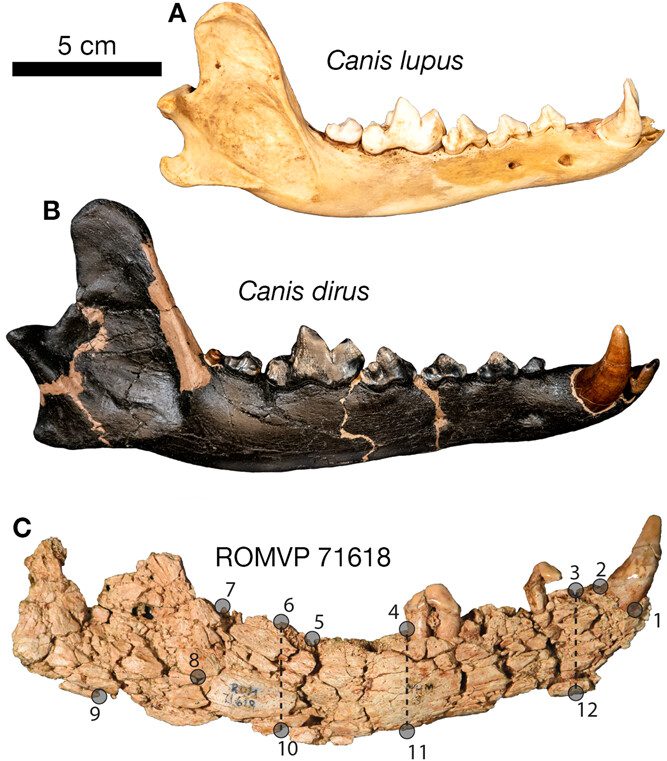Fantasy fans rejoice, we’re here to tell you that dire wolves actually do exist! Well, existed is more accurate, since these ancient enormous predators roamed around in the Pleistocene North and South America. A specimen of one of these wolves found in Medicine Hat, Canada was never fully described, but research into the dentition of the specimen leads researchers to believe the bone belongs to a dire wolf.
The specimen is thought to be between 25,000 and 50,000 years old and consists only of one jaw bone, including some teeth, labeled as ROMVP 71618. Found by Hope Johnson in 1969, the specimen was one of over 1,200 vertebrate fossils collected near the city of Medicine Hat in southeastern Alberta. C.S. Churcher originally identified the bone as C.dirus in an unpublished report, but now a new team is seeking definitive answers abput the owner of the bone.
“It had never been fully described,” evolutionary biologist Ashley Reynolds, lead author of the paper, told The Canadian Press. “This had never been done for this specimen.”
One of the other fossils found in this area belongs to a sabretooth cat (Smilodon fatalis). This lends strength to the idea that the jaw bone belongs to a dire wolf, since the two species were known to have an overlapping range. The range of the dire wolf is thought to be larger than previously estimated as recent fossils were found in northern China, with the suggestion of an ice-free corridor that would have passed through the Alberta region, thereby connecting North America to Asia and allowing migration of the dire wolves. This specimen was also found 500 kilometers (311 miles) north of a previously described Wyoming specimen, making it the most northerly point for this species.
The team performed anatomical comparisons between the suspected dire wolf jaw bone known as ROMVP 71618 and a dire wolf bone from California, as well as one from Peru and those of grey wolves. The team found it to be much larger than the expected grey wolf jaw length. They suggest that the individual dire wolf the sample was from was an older individual since the teeth found within the jaw are heavily worn.

Comparison between the three wolf jaws. Image Credit: Reynold et al., (2023)
The research finds the jaw bone to belong to a dire wolf, representing the only confirmed record of the species within Canada. In case you were wondering how your best friend’s Maltese could be related to such an impressive Ice Age creature, research published in 2021 shows that dire wolves were not closely related to grey wolves and in fact have no close living relatives.
The paper is published in the Journal of Quaternary Science.
Source Link: Ice Age Dire Wolves Did Live In Canada, First Fossil Jaw Reveals